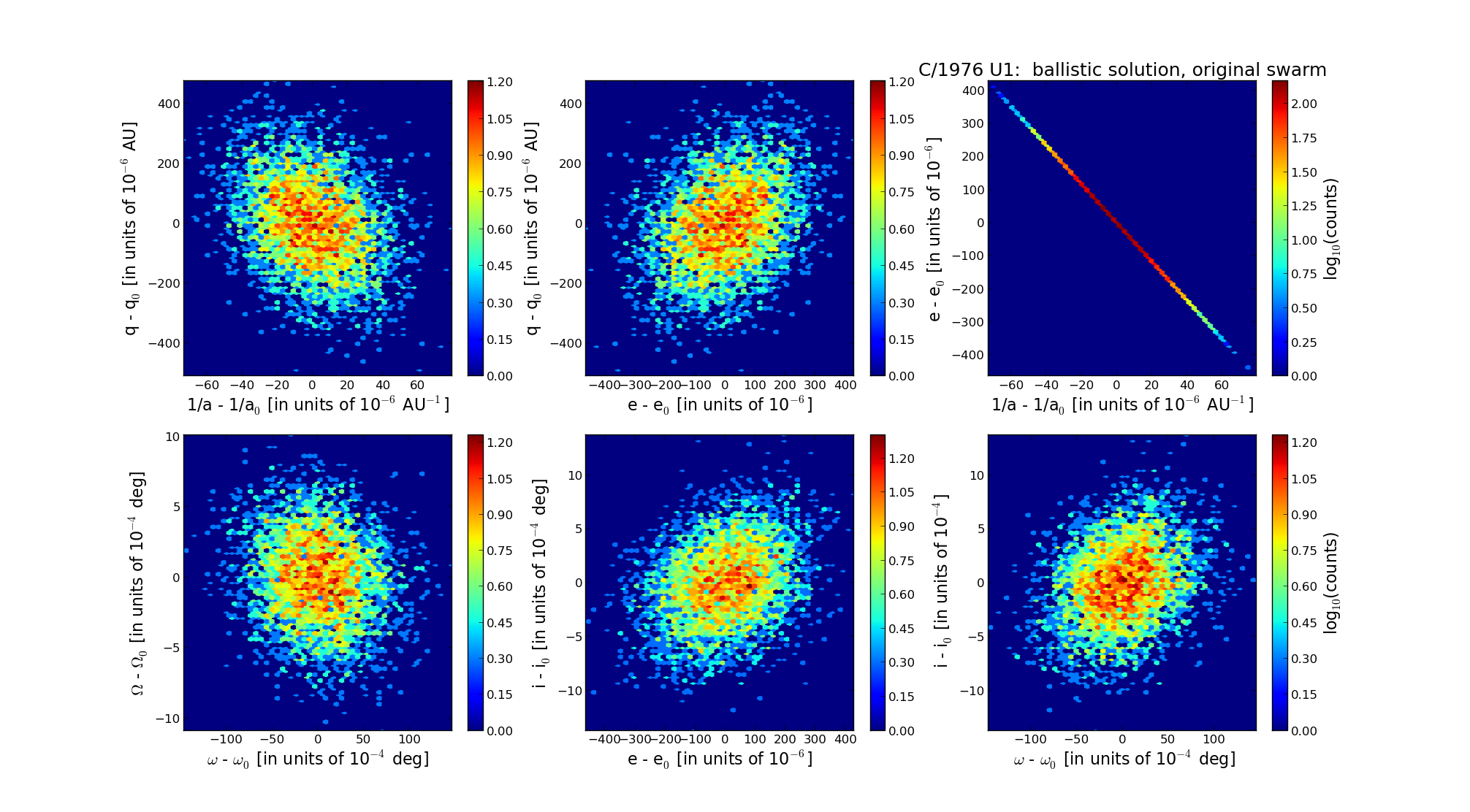| Solar System Dynamics & Planetology Group |
 |
C/1976 U1 Lovas |  |
| Solar System Dynamics & Planetology Group |
 |
C/1976 U1 Lovas |  |
| number of observations | 30 |
| number of residuals | 60 |
| data interval | 1976 Nov. 22 — 1978 Feb. 10 |
| rms [arcsec] | 1.69 |
| orbit quality class | 1b |
| Epoch (TT) | 19760701.0 | = JD 2442960.5 |
| time of perihelion passage (TT) | 19760706.362248 | ± 0.036083 |
| perihelion distance | 5.85727320 | ± 0.00014296 |
| eccentricity | 1.00388129 | ± 0.00012609 |
| argument of perihelion [deg] | 118.787189 | ± 0.003919 |
| longitude of the ascending node [deg] | 286.037188 | ± 0.000293 |
| inclination [deg] | 86.631909 | ± 0.000358 |
| inverse semimajor axis [10-6 au-1] | -662.65 | ± 21.51 |

| Epoch (TT) | 16690531 | |
| time of perihelion passage (TT) | 19760706.996700 | ± 0.035841 |
| perihelion distance | 5.85519975 | ± 0.00014134 |
| eccentricity | 0.99973363 | ± 0.00012792 |
| argument of perihelion [deg] | 118.864652 | ± 0.003893 |
| longitude of the ascending node [deg] | 286.024042 | ± 0.000293 |
| inclination [deg] | 86.663827 | ± 0.000353 |
| inverse semimajor axis [10-6 au-1] | 45.49 | ± 21.85 |
| Epoch (TT) | 22850611 | |
| time of perihelion passage (TT) | 19760707.800353 | ± 0.036004 |
| perihelion distance | 5.85826685 | ± 0.00014138 |
| eccentricity | 0.99884526 | ± 0.00012806 |
| argument of perihelion [deg] | 118.887188 | ± 0.003900 |
| longitude of the ascending node [deg] | 286.007941 | ± 0.000292 |
| inclination [deg] | 86.681367 | ± 0.000352 |
| inverse semimajor axis [10-6 au-1] | 197.11 | ± 21.86 |